Dog kibble is a type of dog food that is completely dry. Extrusion is used to make dog kibble, which is composed of pulverised and shaped items such as beans, meat, vegetables, and other nutritional foods. When we feed our dogs dry kibble, why do we need to add water to it?
Dog’s kibble is enriched with water because it aids digestion by encouraging dogs to eat more water. Allows them to drink more water, which prevents dehydration symptoms over time. Some dog owners add water to their dog’s food in order to break down the contents and make it smell better.
In this article, I’ll go into greater detail on the health advantages and water consumption associated with mixing water into dry dog food. I’ll also go over some of the things you should keep in mind while adding water to your dog’s dry food.
Is it safe to add water to dog food?
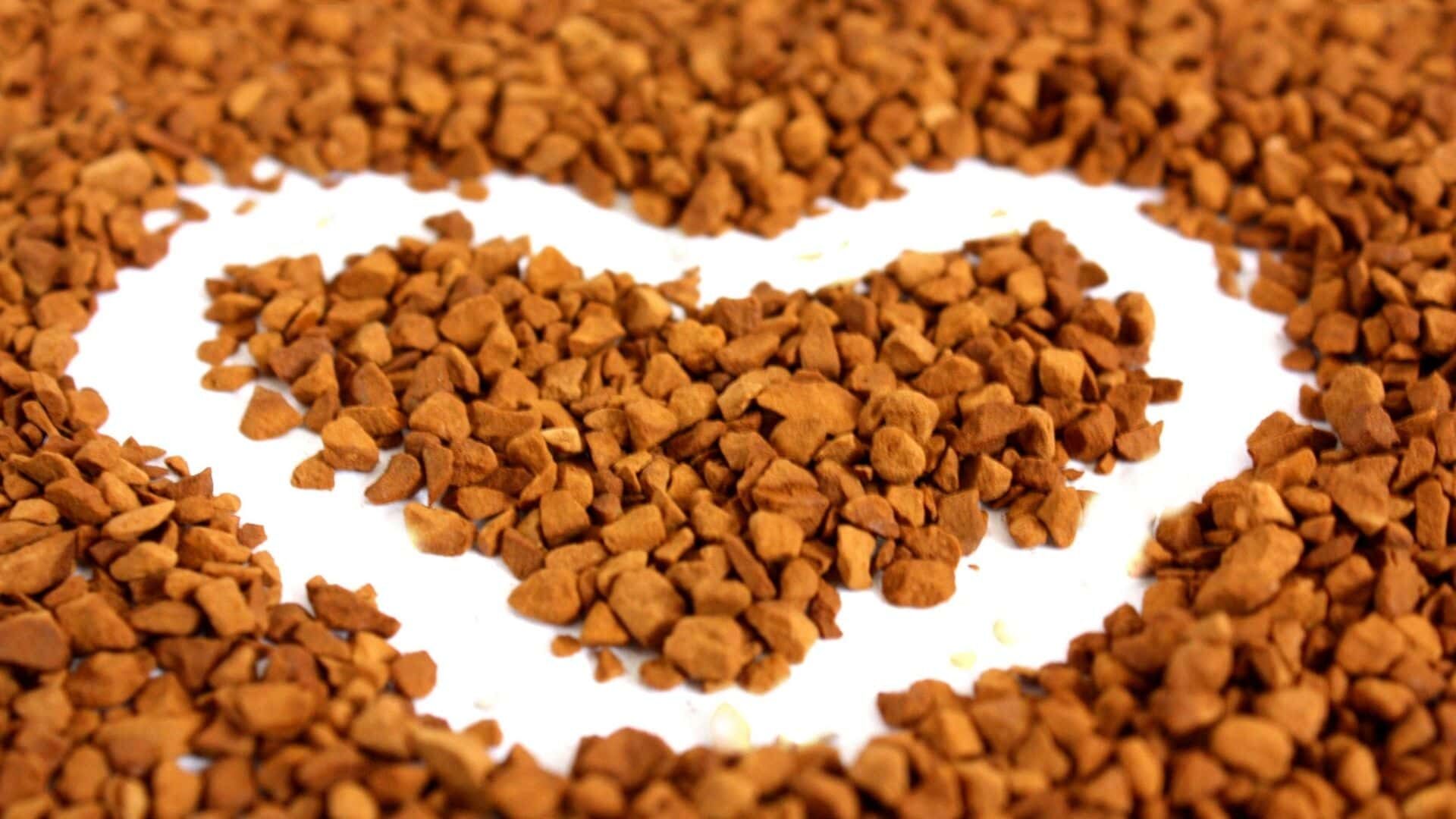
My dogs get kibble and cooked chicken soaking in a flavorful warm broth twice a day like clockwork. They’re blown away by it. Everybody gets out of bed, even my picky eater, so she doesn’t miss out on the feast. To find out if it was worth it to soak my dog’s food, I did a little study on the subject:
Dog food can be persuaded to eat by soaking it in a pleasant liquid like broth. If your dog doesn’t drink enough water, has a sensitive stomach, or has damaged teeth and can’t eat hard kibble, soaking your dog’s food can help. Adding wet kibble to your dog’s diet can also help them lose weight.
Soaking dry dog food is not recommended by some, as hard kibble eliminates plaque and helps keep teeth healthy. Dry kibble’s abrasiveness may theoretically scrape plaque from a dog’s teeth, but the reality is more complicated.
Cleaning your dog’s teeth by hand is the most effective method. There are a couple of options here: you can wash your dog’s teeth or give him dental chews or toys (like these Amazon favourites).
Putting water in kibble has sparked a lot of discussion. People have different opinions about whether or not it’s worthwhile. In the end, what do we have here? If water is added to kibble, does it outweigh the drawbacks? Here are the arguments for and against each viewpoint.
Although kibble is a popular dog meal, some owners are concerned about how much water is in it. Because food contains water, kibble is disliked by some dog owners, while others enjoy it. Because it aids digestion and ensures that your dog stays properly hydrated, water is an essential part of your dog’s daily diet. If your dog doesn’t drink enough water from his water bowl, it isn’t hazardous to him.
Today’s pet food is frequently prepared in the kibble form, which uses high heat and pressure to compress the ingredients into small, spherical pellets. There are several benefits involved with making sure your pets are well hydrated, but this type of diet is lacking in that regard.
As you may be aware, your pet’s digestive system, weight goals, and the health of important organs like the kidneys and liver are all dependent on adequate water intake.
We also know that it can be difficult to persuade our cats and dogs to drink water, even if it’s good for them.
10 reasons why you should add water to dog’s kibble
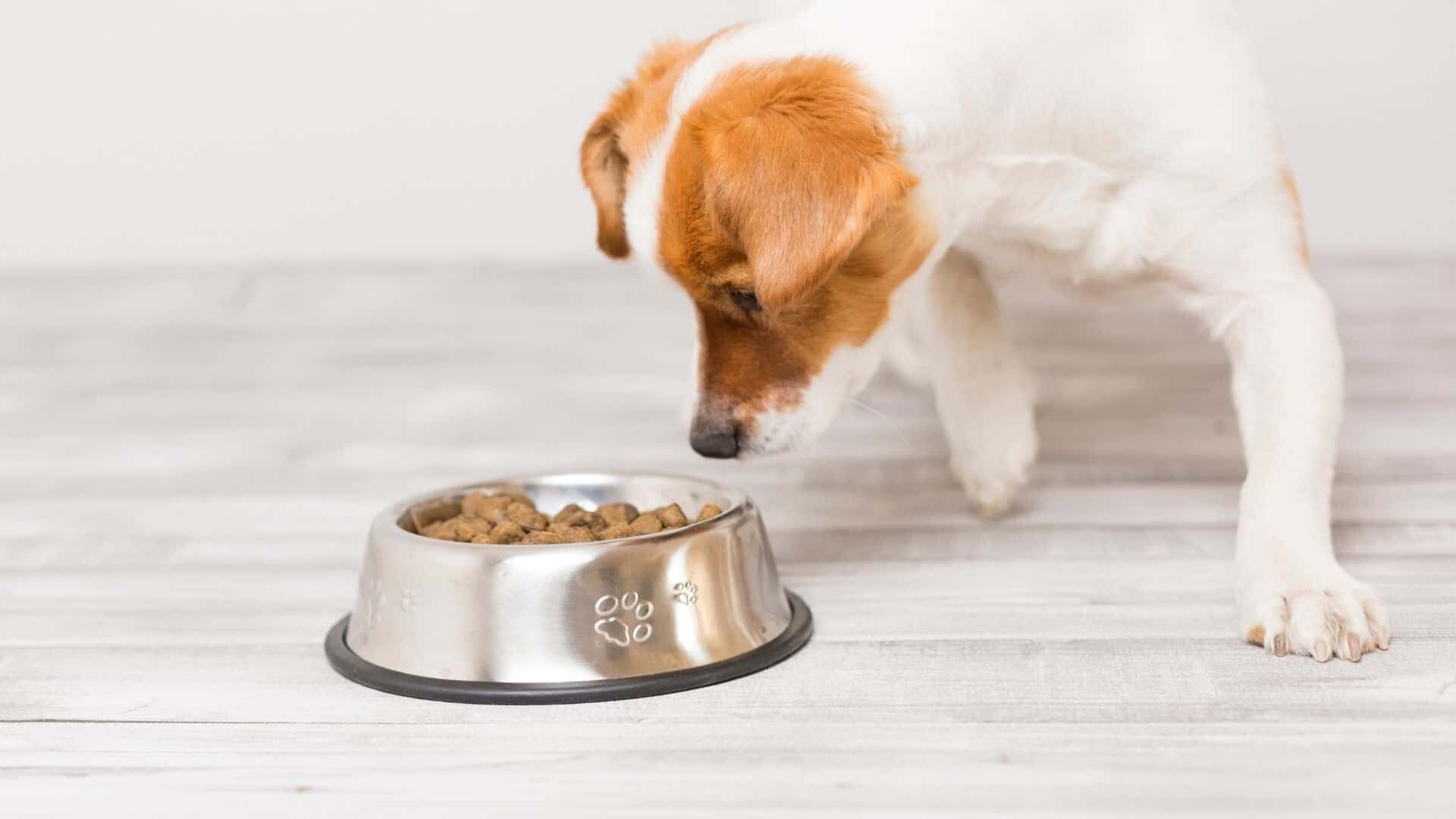
Soaking your dog’s food offers many advantages to feeding dry food, as this article explains in detail. You should soak your dog’s food for the following ten reasons:
1. Enhances the appeal of the cuisine
While you’re pondering the potential health benefits of soaking your dog’s kibble, keep in mind that your pet’s first concern is whether or not the meal he’s eating tastes nice. It’s good to know soaking kibble results in tastier food.
Most dog owners use homemade chicken or beef broth or just plain water to soak their dog’s food.
2. Gulping should be avoided at all costs
Gulping is a term used to describe the act of taking in a significant quantity of food at one time. Some canines may be suffering from a mental condition. Others do it as a matter of course. The presence of food may also be a factor, as they get thrilled when it’s there. Dogs’ digestive systems have a hard time breaking down large bits of food when they ingest them all at once. This can even cause the dog to vomit up all he or she has eaten after gulping it down in a hurry.
Gulping in dogs can be solved by adding water to dry dog food. This is due to the fact that water keeps food moist, which makes it difficult for the dog to swallow huge portions of food. In addition, because the food will be so soft, even swiping without chewing will not pose a difficulty for the food’s digestion or absorption.
3. Involved in a puppy’s weaning phase
Puppy milk is the only food a newborn puppy can consume. You’ll have to add more food as it develops and becomes more mature. The puppy will have a hard time transitioning to dry food because it has been accustomed to eating milk, which is in liquid form.
As a result, more attention must be taken while selecting the sort of food to feed your puppy throughout the weaning period. Puppy teeth are still developing, and their digestive systems aren’t yet strong enough to handle food that demands a lot of energy to chew, swallow or digest.
4. Supports digestion and soothes upset stomachs
The soaking of your dog’s kibble can help alleviate some of these digestive disorders, such as vomiting, diarrhoea, and constipation.
Food is more easily swallowed and digested when it is moistened with liquid. By doing this, you reduce the amount of work your dog’s digestive enzymes have to do to digest the food.
5. Your dog will drink more water because of this
Drinking water might be a challenge for some dogs. This could be due to a number of factors, including the water in the bowl becoming too warm (here’s how to keep it cool), the water bowl in the yard becoming a haven for ants and other insects, or your dog simply being unaware of their need.
Soaking your dog’s kibble is one technique to ensure that your pet gets adequate water, no matter what the weather is like.
For every pound of body weight, a dog should drink one ounce of water every day. This can be from water, wet dog food, or the liquid used to soak the kibble in. Soaking dog kibble helps your dog consume less water from the water dish because they are already getting liquid from their diet each day.
6.increase the mood of your dog’s eating habit
Due to a variety of factors, some dogs have bad feeding habits and will not eat without being lured to their bowls. Adding water to a dry dog kibble generates an enticing aroma that pups find alluring, as discussed before.
Each of the elements in dry food releases a distinct aroma when it’s broken down. Adding a chicken fragrance to a dish of dog chow, for example, makes it much more appealing. If your dog isn’t a fan of dry food, this method of enticing him to eat increases his likelihood of doing so.
7. To maintain your dog’s dental wellness
The oral health of puppies and older canines is particularly precarious. Their weak jaws are caused by a lack of growth in young dogs and old age in the older ones.
When you add water to the dry dog food, it will make it easier for the dogs to eat and digest. This will protect their sensitive gums and keep them safe from future harm.
8. Improves the urination of dogs
Kidney and urinary tract infections can occur in dogs who do not consume enough water. Dogs need a lot of water to be hydrated, and this is one of the main reasons why.
Dogs who are prone to these infections can benefit from soaking their kibble in warm water, and soaking kibble can help dogs avoid these infections completely.
9. Can assist your pet in their quest to lose weight
Adding water to your dog or cat’s food will help them feel more satiated and less hungry. Consumption of fewer calories is encouraged by the fact that the stomach is filled with water. This is especially useful if you’re trying to lose weight for your dog or cat.
Because of their diet, your pet may be bloated. As soon as a dry dog or cat food is exposed to moisture, it expands. The risk of bloat or stomach torsion is increased when this occurs in the digestive tract, resulting in hazardous swelling and bloating.
Pre-soaking the kibble reduces this risk and helps your pet maintain a healthy body weight.
Increasing your pet’s water intake might also help with regularity issues like constipation and water retention.
10. Easier to eat food
Soaking your dog’s kibble makes it easier for them to consume, especially if they have a difficulty with their teeth or have lost their teeth for any reason.
What are the pros and cons of putting water in dog’s kibble?
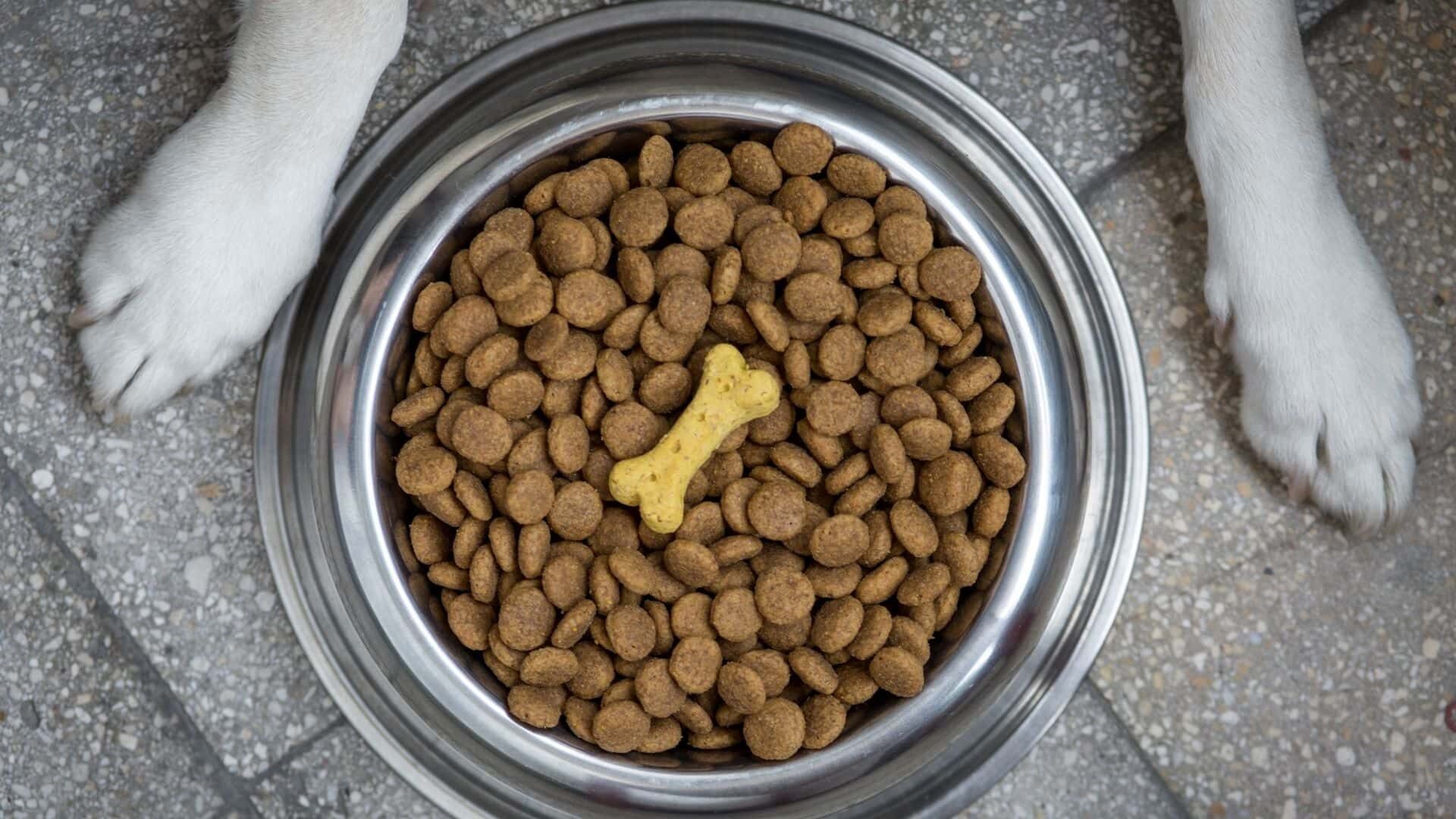
Pros of putting water in dog’s kibble
- If a picky eater smells the wet food, he or she will consume the dry food.
- The moisture content of food that has been wetted will rise.
- If you soak your dog’s food beforehand, you can reduce the likelihood of stomach upsets.
- Adding warm water to your dog’s food can encourage him to eat it if he normally does not.
- Some dogs prefer canned food to kibble because of its palatability.
- Bringing some tasty canned food along with their kibble can help dogs who are going to be away from home for an extended period of time keep up their normal eating habits.
- Adding water to the kibble will help soften it and make it simpler for your dog to eat if he has diarrhoea.
- If your dog has eaten all of his food, you can reward him with a treat in order to get his attention.
- As a precaution for dogs with kidney issues, you might want to consider adding a little extra moisture to their food.
Cons of putting water in dog’s kibble
- Preservatives are more prevalent in wet food than they are in dry food.
- It’s possible that you’ll create a situation where the dog refuses to consume dry food.
- Dogs aren’t allowed to “graze” on their own food. 20–30 minutes after serving wet food or a dry/wet mix, it should be thrown.
- Adding water to medication makes it more difficult to measure out the dosage, making it more difficult to administer your dog’s prescribed drugs.
- Doing so may result in diarrhoea, which is why some people advise against it unless your dog is already suffering from it.
- To make your dog’s kibble more difficult to swallow, you may want to add a small amount of warm water to his water bowl.
How long may wet kibble be kept out?
The kibble does not contain any preservatives, therefore it’s crucial to keep that in mind while adding water to it. In the event that your dog consumes all of his food in one sitting, you don’t need to worry about storing the extra food in his dish.
It is vital to keep in mind that bacteria can grow if your dog is a slow eater or you want to put the wet kibble in your dog’s bowl overnight.
Because wet kibble can become a breeding ground for bacteria, you should always throw it after 12 hours.
Even if the wet kibble is left out for more than 12 hours, it may not go bad if you take this precaution.
There is no need to add water to your dog’s kibble, but it may be beneficial for some. The wet kibble softens the dry nuggets and makes them easier for your dog to eat, while also boosting their desire for more food.
There are, however, drawbacks. Bacteria can form on the wet kibble if you leave it out for too long, which can cause disease or even death! Try soaking the kibble in warm water for a few minutes before feeding to ensure that your pet gets all of its nutritious benefits without risking any negative side effects from keeping it out for too long.
Things to keep in mind while putting water in kibble
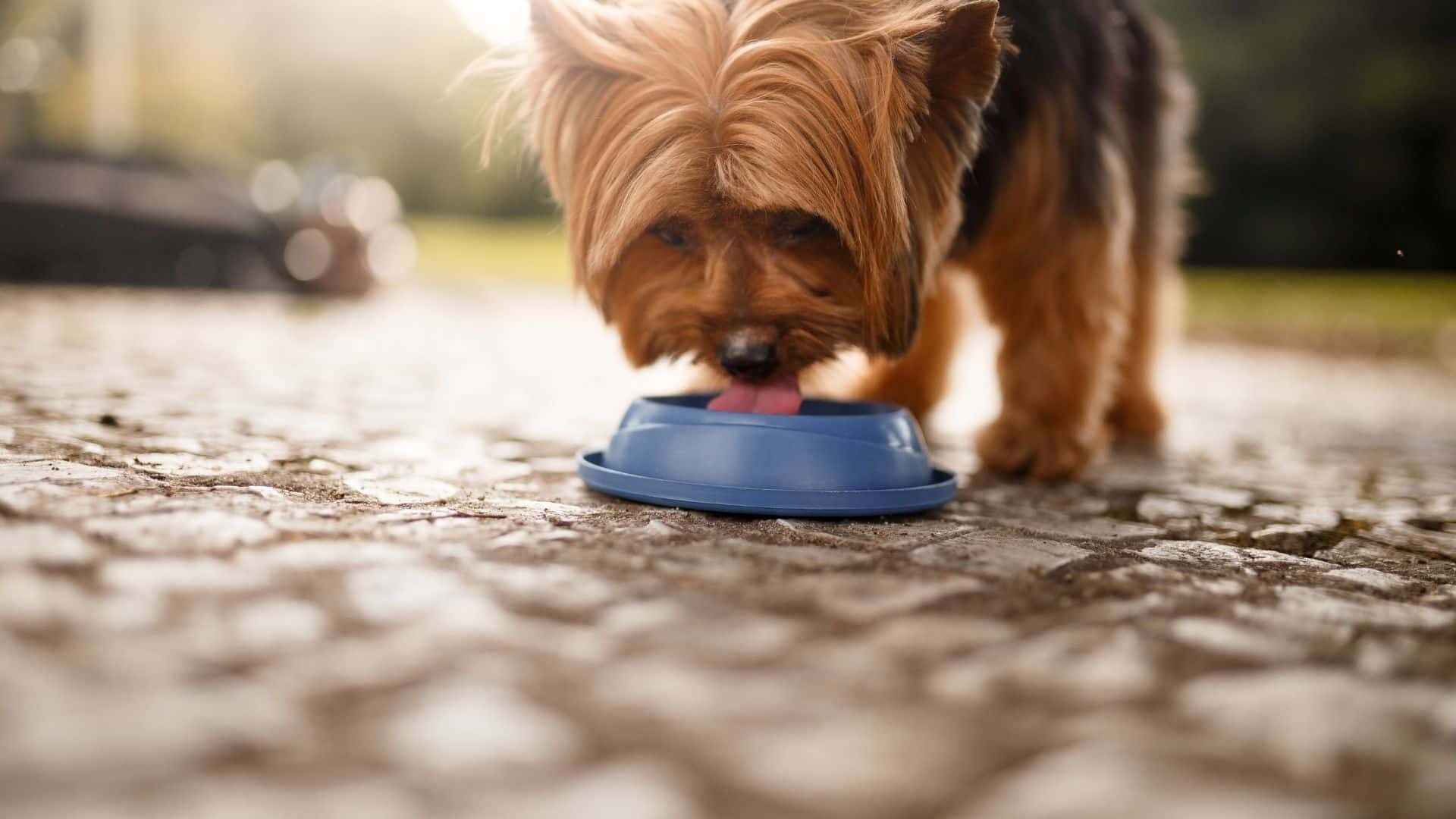
When adding water to dog kibble, there are few things to keep in mind.
1. Temperatures are a factor
Due to the high temperatures, your four-legged best friend will drink more water during the summer. As a result, water added to kibble should be fed often throughout this time of year. Adding a modest amount to the dog’s kibble four or five times a day is preferable.
2. Serving size of dog food
You’ll need to keep a close eye on the ratio of water to the dogs’ kibble in order to avoid overfeeding them. A cup of dog kibble can be made moist by adding half a cup of water. Remember that the purpose is to moisten, not drown, the meal.
3. Preferences of your canine companion
In terms of how they prefer to eat, every dog is unique. People have different preferences when it comes to how wet or mushy their meal has to be. As the days go by, gradually increase the amount of water you add to the mixture to get a sense of what they want.
4. The water’s temperature
The slower the water softens the dog’s kibble, the better; therefore, use only lukewarm water. After you’ve added water to the kibble, don’t leave it out for your dog to eat for too long.
Watch Preparing a dog’s dinner by soaking their food | Video
Why adding water to kibble is recommended?
When giving a dry kibble, adding water to your dog’s food bowl will help speed up digestion. Digestion is greatly aided by commencing the breakdown of food particles by hydrating the dog’s stomach content.
Is it unhealthy for dogs to moisten their kibble?
When it comes to fat content, wet foods tend to be higher than dry ones. Some dogs, particularly those susceptible to pancreatitis or sensitive to fatty diets, may find this to be an unhealthy amount of fat. A dog’s tartar buildup may be accelerated by eating wet food, as opposed to dry food, which can help prevent tartar buildup.
To soak kibble, how long should I leave it out?
It’s important to know how long to soak puppy food. To loosen and soften puppy food, soak it for 10 to 15 minutes. This makes it easier for puppies, who are still developing their teeth, to eat because their jaws are still soft.
Whether or not adding water to dry food cause bloating in dogs?
In the event that your dog is at risk of bloating. If a dog has a tendency to consume a lot of water after a dry meal, putting water in his stomach on top of the dry food could lead to bloat.
How do you soak the kibble?
A half cup of water to a cup of kibble is the ideal ratio, although you can modify the ratios to your pleasure. The sooner the kibble softens, the hotter the water must be.
Conclusion
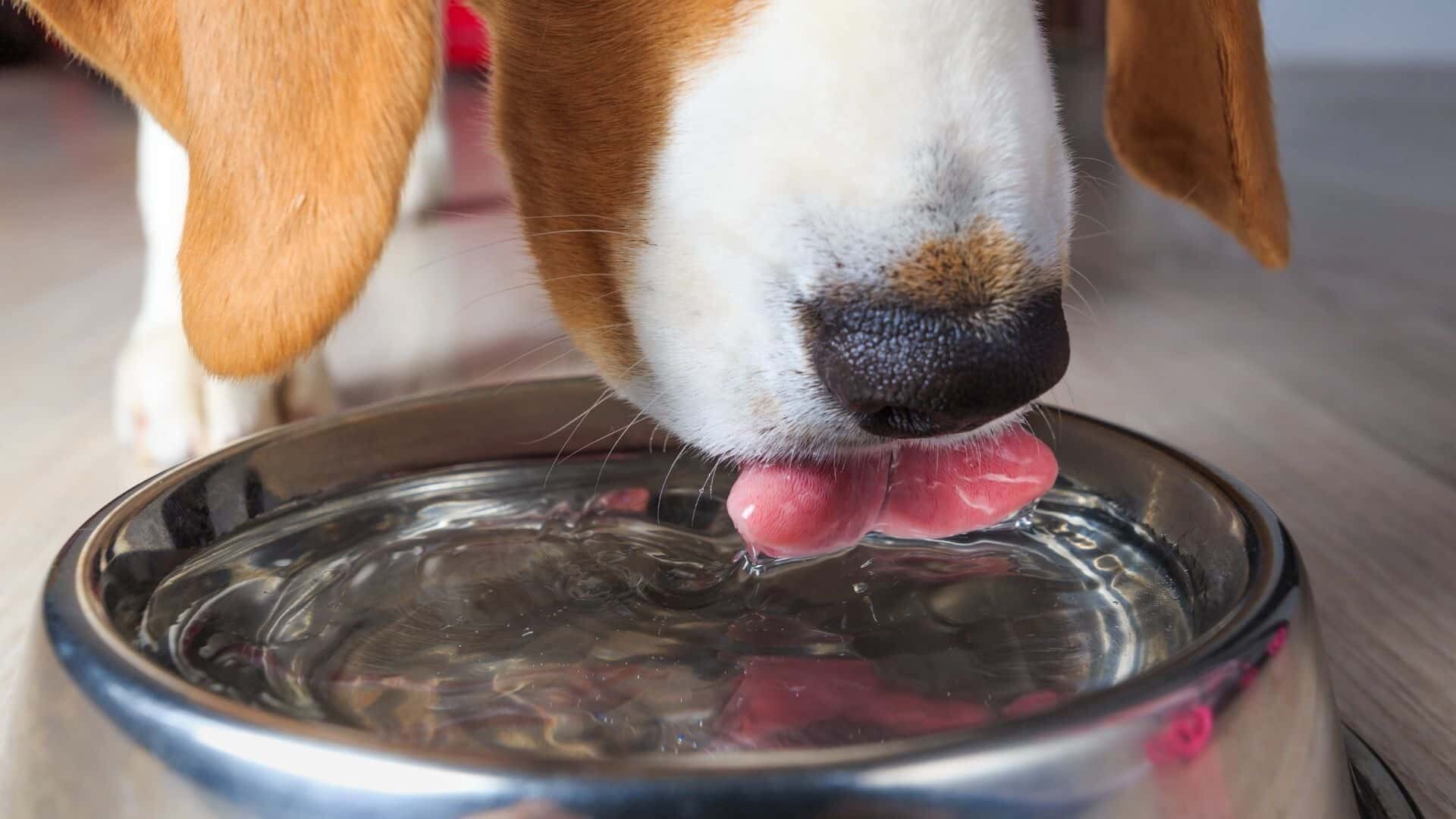
It’s not a universally held belief that dry kibble should contain water or other liquids, but it’s one that I wholeheartedly support. There are far too many advantages and few drawbacks to doing so.
Dogs with dental or digestive disorders, overweight or obese pets, and puppies can benefit from adding liquid to their diet. Bloat may be less of a problem as a result.
Bottom up
Please comment below about your ideas and share this “Top 10 Pros and Cons of Putting Water in Dog’s Kibble: Guide” article with your friends.
Stay tuned with our website to find out more exciting stuff. Don’t forget to check out our previous articles too.
Until the, Read about, When Do Blue Heelers Calm Down (At What Age): Guide






